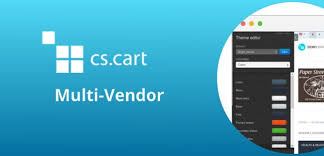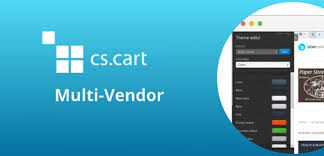When you go with web development, JavaScript is the best and popular platform for businesses and developers in the present time. Probably, you have had a choice to try-out with more than one JS frameworks; however, all of them are not explored.
This is genuinely noticeable that JavaScript is pushing ahead at a quick pace and there is an unvarying strain to include latest and trending abilities to your repository. So as to do that, describing top JS frameworks in the current time is very important.
We have talked about with the JavaScript domain professionals, read hundreds of blogs, create a comparison of JS frameworks and analysis forums. Let’s check out the list of 10 best JavaScript frameworks.
Stack Overflow Annual Developer Survey 2018 engaging more than 100,000 respondents demonstrated that near to 70% of programmers globally consider JS as the best and their favourite programming language defeating prevailing standard rivals such as C#, PHP, Python and Java by a big margin.
The main reason for the widespread popularity of JS and dominance is in its flexibility and versatility.
Not only JS viewed as the language of the web for conventional client-side use, but it is also likewise now being utilized for server-side apps along with progressive web apps, machine learning for automation, desktop applications, native mobile app development and more.
There are many JS frameworks and libraries available to use and many of them are already launched to give different functional features to its users. Choosing the correct framework for your next venture is a daunting and intimating task.
Not to forget, Aurelia is the only framework that lets developers build components with plain, Vanilla TypeScript or JavaScript.
To assist you out, we have elaborated a list of top 10 JavaScript Frameworks for 2019. Let’s have a look at these frameworks:

JavaScript Frameworks: Aurelia
For all the open source modern JS modules Aurelia is just like a toolbox that aids in mobile and web application development. IT is also known as “next-gen framework”. Aurelia has been achieving a lot of popularity since its launch. Companies like BTEK, Ordami, Freska and Fileee and more than 800 websites utilizing Aurelia.
Don’t forget, Aurelia is the only Framework that helps programmers develop components with JavaScript, Vanilla TypeScript or plain.
JavaScript Frameworks – Aurelia features
- Multiple language support: Aurelia’s APIs are carefully designed to be consumed naturally from both today’s and tomorrow’s most useful web programming languages. Aurelia supports ES5, ES2015, ES2016 and Typescript which is very helpful and gives you high flexibility.
- Extensible HTML: Aurelia’s extensible HTML compiler assists you control template generation, add custom attributes to existing elements and create custom HTML elements, all with complete support for high-performance batched rendering, data binding and dynamic loading.
- Clean docs: Aurelia comes with a helpful document and highly descriptive set that aide all programmers. It is well-known to offer well-maintained documentation.
- Module framework: As compared to the monolithic framework system, Aurelia is based out of smaller and focused modules. Use them collectively and pick to develop a custom and full-featured solution.
- Multiple language support: APIs of Aurelia are designed to be meeting the need web-programming of today’s and tomorrow’s. It supports Typescript, ES5, ES2015 and ES2016 which give high flexibility and also very helpful.
JavaScript Frameworks – Vue
Vue has become the most popular front-end tool, created by Evan You who worked on many Angular.js projects at the time he was working at Google, Vue.js as an attractive alternative and a lightweight counterpart of Angular.js.
The main reason behind its popularity among developers is due to its progressiveness. It meets the developers needs easily, starting from 3 lines to handling the entire view layer. Vue can be integrated with an application via the ‘script’ tag, where it normally starts to show the space.
Check out the features of Vue.JS
- Readability: Vue is easy to understand and read for programmers since functions are highly available. Also, HTML blocks management can be optimized with the usage of distinctive components.
- Adaptability: The developers who adapt Vue switch to it from big frameworks. This switching time generally comes about to be swift due to the similarity of Vue to Angular and React.
- Size: This is one of the biggest features of Vue. It is very lightweight just 18KH after zipping the complete build. The ecosystem works around Vue is fast and small as it permits its users to separate the run time as well as template-to-virtual-DOM complier.
Scalability, integration capability and versatility are also the features of Vue.JS. Vue can be integrated with different libraries/frameworks such as WordPress, Laravel and Django.
JavaScript Frameworks – NodeJS
It is the widely used open source cross-platform and largely downloaded framework. It is used for developing networking and server-side applications with APIs along with back-end services. It is developed on Google Chrome’s JavaScript Engine (V8 Engine) as a platform.
Check out the features of Node.JS
- Flexibility: The JS-based applications developed on Node can be executed within the Node.JS runtime on different OS such as Windows, Linux and MacOS.
- Proxy Server: It can be used to proxy servers and helps in streamlining data from different sources.
- No buffering: The apps developed in NodeJS under no conditions buffer any kind of data. This is the main cause that the apps result in the data in the form of chunks.
Node JS uses single-threaded models and the given API’s of Node’s library is driven asynchronously.
JavaScript Frameworks – React.JS
React is an important JS library which powers Facebook. Open sourced and developed by Facebook in 2013. In Jan 2019, Facebook increased its support to the library by shifting the create-react-app from incubation to the official Facebook repository.
React is not a framework it is just a library in this manner it offers a declarative way of defining UI components and can also be integrated with other libraries.
React finds wide usage is when programmers require breaking down typical codes and raising them in a zero-error environment that has the power to handle real-time data.
It uses Virtual Dom that assists it to add with any app. It also uses JSX to design components and assists to create SEO friendly websites as compared to other JS frameworks.
Check out the features of React.js
- Dom Binding: Developers don’t need to go via the pain of binding DOM elements to functional power. React manages this condition by breaking this binding across multiple areas of the code.
- Data and Presentation: React offers presentation layers and total separation of data.
- Reusable Components: Facebook has created React in a manner that it offers the ability to reuse code components of any level. This spares a lot of time at the time of development.
- Ease of Learning: In terms of the syntax React shows simplicity that includes a lot of HTML writing skills. It is easiest JS libraries to pick up.
JavaScript Frameworks – Angular.JS
Angular is known as one of the most powerful open source frameworks. It is a one-stop solution that focuses to offer developers with every possible alternative out of the box. From the adoption of TypeScript and routing to HTTP requests, everything has been set up.
Angular was developed and maintained by Google and releases new versions after every 6 months. The learning curve of Angular in the earlier versions was quite steep. With every new release, Angular gives new features and improvement in performance.
Check out the features of Angular.js
- Router Hooks: It is possible to track router cycles from the initiation of running guards until the completion of activation.
- Build Optimizer: It removes all the necessary runtime code and makes the application faster and lighter.
- Documentation: Angular comes with detailed documentation. In this way, it helps new developers to understand the code of other projects and pick up the framework.
- Data Binding and MVVM: Angular 5 permits 2-way data binding in order to enable a singular behaviour and minimizes the risk of possible errors of the app.
JavaScript Frameworks – Ember.js
Ember helps developers create large and single page web applications. It has been an opinionated platform which was developed to be very flexible.
Ember makes the developers confirm their expectations by giving a lot of assumptions about the application. The most notable uses of Ember is the desktop application, Apple music. It has more powerful routing system when compared to Angular or React.
Ember is at the top when we talk about the quality of support and ease of admin but lacks ease of use and setup. Ember is ahead from Mithril and Polymer when it the matter of client-side JS MV framework.
Check out the features of Ember.js
- Ember Inspector Tool: It is useful for debugging applications.
- The Ember Data Library: Ember has an excellent data library.
- MVVM and CoC: Ember functions on MVVM (Model-view-view model) and follows CoC (Conversion over Configuration)
- Ember Templates: Templates are written with Handlebars templating language and built into the UI.
- Ember-CLI: It gives the standard application structure and develops pipelines.
- UIs are nested and Testing tools are built-in.
- URL support and Client-side rendering available
- Minimizes the DOM
JavaScript Frameworks – Backbone.js
Backbone.js is a lightweight JS library which was launched in 2010. It is a flexible framework for structured code since the beginning. It helps developers develop client-side applications and single page web applications that run in a web browser.
It provides MVP network, which abstracts Document Object Model (DOM), data into models and binds these two utilizing events. When compared to performance factor then Backbone is better than Angular. Backbone helps developers in order to choose a suitable tool that works best for an assigned project.
Check out the features of Backbone.js
- Event-driven: This featured communication between models and views stops the code from being complex to read.
- Restful JSON interface: Backbone has a RESTful JSON interface, relied on the MVP application model.
- Backbone adopts an imperative programming and coding style when managing DOM.
- It separates business logic and UI.
- Backbone has a soft dependency with jQuery and a hard dependency with Underscrore.js.
- Backbone consists of more than 100 extensions. It also assists in organizing codes and functions as a backbone for any project.
JavaScript Frameworks – Mirthil.js
Mirthil is used for developing Single-page applications on the client-side. It provides XHR utilities and routing. It is fast and tiny. Without the need for any polyfills, it supports all the browsers.
Mirthil makes use of optimized and sophisticated virtual DOM algorithm to minimize the amount of DOM updates. The load time of the library and update performance of Mirthil is faster when compared to Vue or Angular or even React! Mirthil organizes applications and has lesser concepts regarding components and data layers.
Check out the features of Mirthil.js
- Basic feature:Mirthil offers URL routing, hierarchical MVC components, customizable data binding, sage-by-default templates.
- Performance:Mirthil is very fast and load time less than 5ms.
- Components:in Mirthil components are developed with a required view property and an optional controller.
- Testability: Without build steps, Mirthil templates can be tested in any JS engine.
- Mirthil contains an intelligent auto-redrawing system.
- It is un-opinionated, Flux compatible and robust.
- It has proper documentation and very active development.
- It is orthogonal to the compiled syntaxes and module system.
JavaScript Frameworks – Polymer.js
Polymer is an open-source JS library developed by Google and contributors on GitHub. Polymer was the first open source library to allow interactive building apps by composing components.
It is used by a lot of websites and Google services. It is being used by Google Play Music, Netflix, YouTube, to name a few. It has achieved popularity due to its structured design process. It has better support for web components and also has better offline modules.
If it the matter to work with Spring Boot REST resources then Polymer is the best JS library as compared to other JS framework.
Check out the features of Polymer.js
- Speed:It is 4 times faster on Safari and 3 times faster in Chrome.
- Data-binding: It supports both one-way and two-way data binding.
- Polyfills: Polyfills are web component specifications. It utilizes the latest APIs for web platforms and offers polyfills for browsers.
- It offers gesture events along with repeat and conditional templates.
- It provides the ability to compose encapsulated HTML, CSS and JS as custom elements.
JavaScript Frameworks – Meteor.js
Meteor is an open-source, free and full-stack JS framework which is written using Node.js. It creates cross-platform codes and allows rapid prototyping. It is fast in creating reactive and smaller apps on the Node.js platform. It uses a front-end HS that executes on the browser and back-end on meteor server within Noide.js.
It integrates with other JS frameworks Angular, Express and React. Meteor also integrates with Cordova and MongoDB technology to develop hybrid applications using JS, CSS and HTML which run on WebView. Companies like Qualcomm, Honeywell and Mazda use Meteor.
Meteor is written in C and C++ and supports OSs like Linux and Windows. It also supports the 3 main UI rendering libraries Blaze, React and Angular. The UX pattern in Meteor is the Optimistic UI stops server roundtrips in order to enhance the user experience.
Check out the features of Meteor.js
- Full-stack Solution: Meteor offers a full-stack solution creating and utilizing web applications.
- Live-browser reloading: When it is the matter of change on the front-end, Meteor reloads the live web pages automatically. It decreases the load time just by refreshing only the required DOM elements in place of reloading the entire page.
- Isomorphic JavaScript code: It allows utilizing the same code for both the ends for web and mobile applications. With this feature, programmers need configure and install different module managers, drivers, APIs and libraries.
- Highly scalable and beginners friendly.
- Easy to set up and start developing projects.
- If we look closely at Meteor is a combined form of MongoDB, Cordova, Angular, Blaze and NodeJS and it is called as ‘One for all package.
So guys these are the Top 10 JavaScript Framework list. I hope like this guide if yes then please share it with your friends at social media. Thanks !


